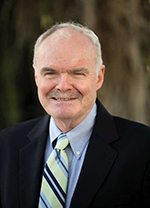A St. Kennedy Day Dissent

We are making a St. Kennedy Day resolution. Every time a local media outlet opposes people who believe the murder of President John F. Kennedy, 48 years ago today, was a conspiracy, we are going to challenge that position. It just happened Sunday in the Miami Herald. The paper’s columnist, Glenn Garvin, in reviewing the TV show “JFK: The Lost Bullet” could not resist an editorial comment at the end.
“The forensic evidence that Kennedy was assassinated by Lee Harvey Oswald has always been overwhelming,” wrote Garvin. Later, in his closing graf, he added, “Yet so many Americans – as many as 70 percent, the last time somebody took a poll on the subject - persist in thinking Oswald didn’t do it, that the president was killed by hidden and powerful hands.”
Now we happen to like Glenn Garvin’s stuff. He’s a born cynic, and one of the best newspaper writers in South Florida. But in this case he doesn’t know what he’s writing about. First, the forensic evidence has never been overwhelming. The other way around. It was the glaring contradictions in the Warren Commission’s selective use of evidence which quickly raised challenges to its “lone nut” conclusion. The Commission came up with “the magic bullet” theory because it was the only way to make Oswald the lone shooter. It also ignored dozens of witnesses who saw shots from the grassy knoll in front of the president. Two of those were Kenneth O’Donnell and Dave Powers, members of JFK’s Irish Mafia, who were riding just behind the president. Both had said one shot came from the front, but were persuaded to testify otherwise by the FBI.
Although it was not known at the time, three of the seven Warren Commission members, including Senator Richard Russell of Georgia, had doubts about their report, and did not want to sign it. And this was before researchers began to develop considerable information unknown to the Warren Commission about connections of Oswald to the U.S. intelligence community, and the CIA’s obstruction of the Warren Commission and subsequent government investigations into JFK’s death. It is revealing that Robert Kennedy sensed that connection immediately. Although it was not revealed until recently, one of his first moves after his brother’s death was to meet CIA director John McCone to see what he knew. McCone knew nothing because he was appointed by JFK and therefore out of the loop. It is significant that the previous CIA director, Allen Dulles, who was fired by JFK after the Bay of Pigs fiasco, wound up on the Warren Commission. He never told the Commission vital information, such as plots by the CIA to kill Fidel Castro.
One of the early Warren Commission doubters was highly placed. Senator Richard Schweiker of Pennsylvania looked into Oswald’s background and, convinced that he had “the fingerprints of intelligence all over him,” reopened the investigation in 1975. Gaeton Fonzi had challenged the Warren Commission conclusion in Philadelphia Magazine in 1967 after interviewing Arlen Specter, who was later a U.S. senator. Fonzi was astounded that Specter, who had come up with the magic bullet theory, could not explain it. Schweiker had read that piece and eight years later hired Fonzi as a field investigator based in South Florida. Schweiker suspected a connection between Oswald and the Cuban anti-Castro activities down here. Fonzi found it, and also found that he was constantly impeded by disinformation from CIA connected people like Watergate burglar Frank Sturgis.
Fonzi went on to work for the House Select Committee on Assassinations, generally known as HSCA. He spent five years on the case, and had a major hand in writing its final report. That report said JFK’s death was probably a conspiracy. That may be the reason 70 percent of Americans think it was a conspiracy. The government has admitted it. But it left open the big question. Who conspired? Was it the mob? Castro? The Russians? Political enemies? CIA? All of these?
Fonzi, convinced by his personal experience that the CIA was covering up, was disgusted at the report’s vagueness. He wrote “The Last Investigation” which first appeared in Gold Coast magazine in 1980 as two long articles. Fonzi continued his work privately and published the book in 1993. It was republished, with additional information, in 2008. Fonzi’s work has been cited in virtually every important book on the assassination. They keep coming. Two of the best recently are David Talbot’s Brothers and James W. Douglass' JFK and the Unspeakable. Both books had the benefit of documents slowly being declassified in the national archives, and people coming forward who, out of fear, had been silent for decades. People had good reason to be fearful. A number of would-be witnesses died mysterious deaths. Hale Boggs, a member of the Warren Commission who had begun to express his dissent, was one of them. His airplane disappeared over Alaska. But as the years passed, people began to talk. One of them was a woman who says Oswald suspected in 1963 that he was being set up to take the blame for President Kennedy’s murder.
In total, there is a mountain of evidence supporting the 70 percent of Americans who believe in conspiracy. Glenn Garvin dismisses such people: “They turn away from clarity and embrace the murk…” Perhaps that’s just a good writer’s typo. Maybe he meant to write “They turn away from disinformation and embrace clarity.”
